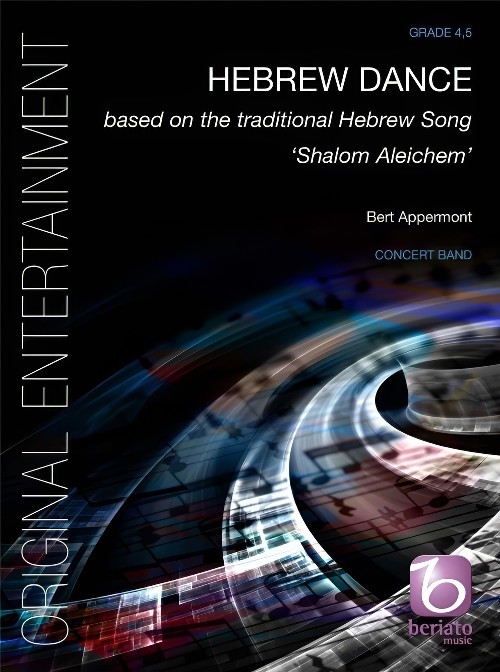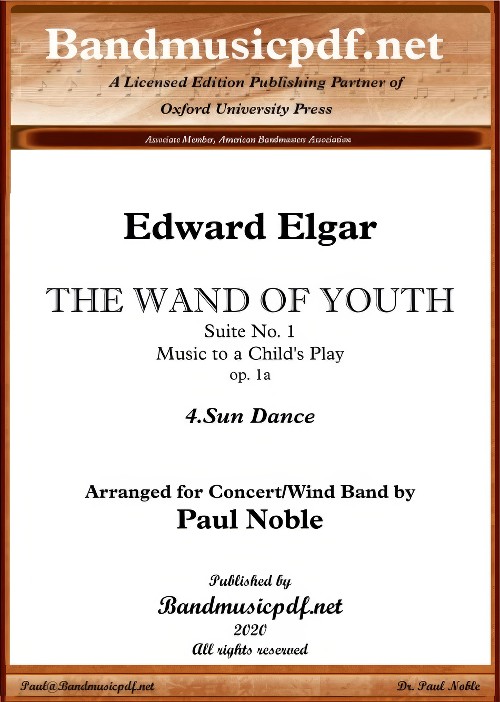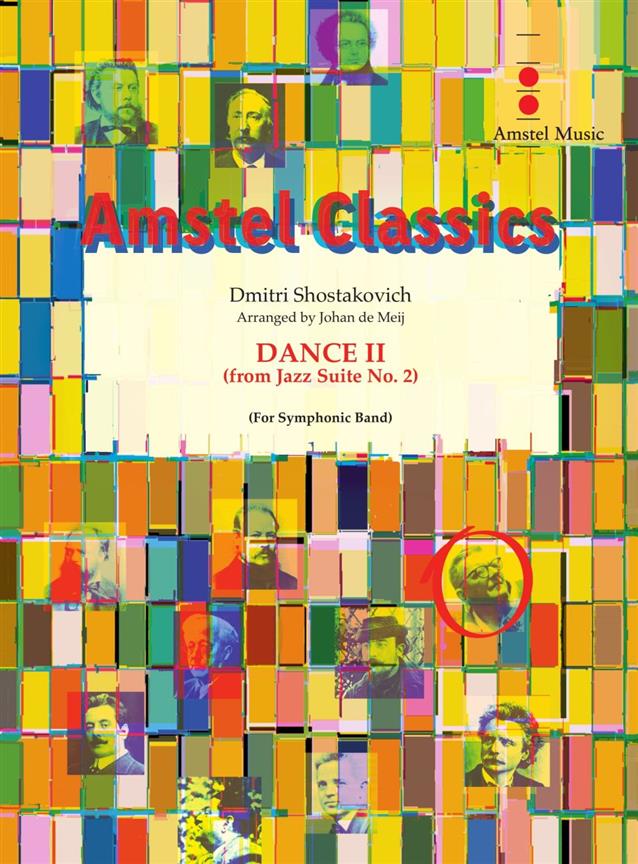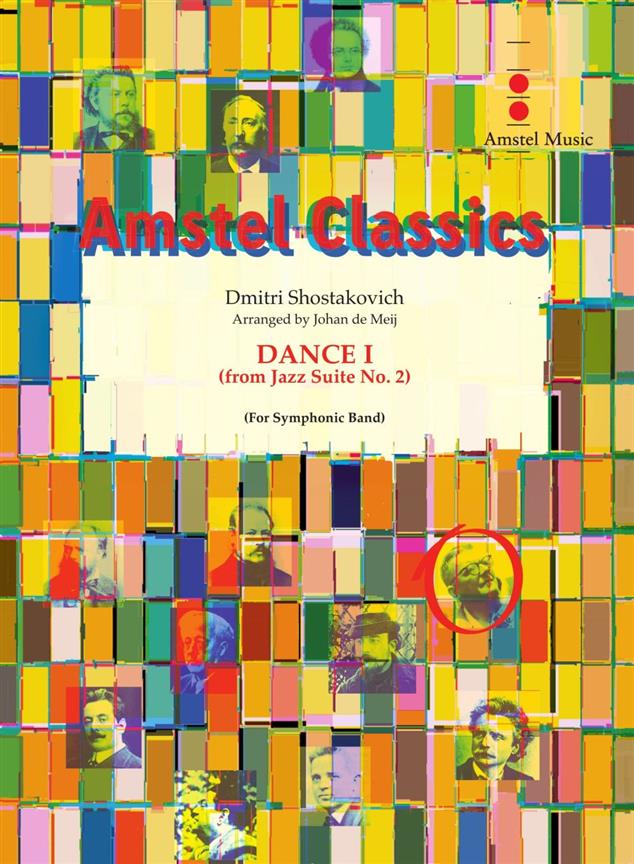Results
-
£84.99
Brazilian Bay Dance - Harm Evers
This piece, by the Dutch composer Harm Evers, takes you and your musicians to the hot atmosphere of a Brazilian beach party. Everyone celebrates until late at night and dances to the cheerful sounds of Latin American music.
Estimated dispatch 7-14 working days
-
 £104.99
£104.99Hebrew Dance (Concert Band - Score and Parts) - Appermont, Bert
This composition is based on the traditional Hebrew song Shalom Aleichem, that has been incorporated in a mix of klezmer, Balkan music and Latin-American music. As the title suggests, the work contains various show elements, such as spectacular solos, hand clapping and stirring percussion. Duration: 4.15
Estimated dispatch 7-14 working days
-
 £50.00
£50.00The Wand of Youth, Suite No.1 - IV. Sun Dance (Concert Band - Score and Parts) - Elgar, Edward - Noble, Paul
The Wand of Youth suites, subtitled Music to a Child's Play, were written in 1869 when Elgar was only twelve years old, music written for a play and acted by the Elgar children for a private family theatrical production. He noted the tunes down in a sketchbook and in 1907, forty years later, he rearranged with only minor changes and orchestrated them as the two suites titled The Wand of Youth, Suite Nos. 1 and 2. Although The Wand of Youth suites date from Elgar's mature years, he insisted on calling it Opus 1, because he wrote these pieces originally for piano many years earlier.
Estimated dispatch 7-14 working days
-
 £94.00
£94.00Dance No. 2 (from Jazz Suite No.2) (Concert Band - Score and Parts) - Shostakovich, Dmitri - De Meij, Johan
In 1938 Shostakovich composed his Second Jazz Suite at the request of the recently founded State Orchestra for Jazz conducted by Victor Knushevitsky. This suite was originally scored for a complete symphony orchestra to which four saxophones, an accordion and a guitar had been added. The Jazz Suite no. 1 in three movements, composed in 1934, had been written for a smaller ensemble. The title 'Jazz Suite' is rather misleading, as the composer definitely uses the style of light music. Back in 1928, the twenty-two-year-old Shostakovich had already composed some light music. A bet among friends to make an orchestration of the popular song 'Tea for Two' in less then one hour time, caused him to compose 'Tahiti Trot'. Shostakovich easily won the bet as he completed the original and witty arrangement within only forty minutes!Duration: 3.45
Estimated dispatch 7-14 working days
-
 £98.00
£98.00Dance No.1 (from Jazz Suite No.2) (Concert Band - Score and Parts) - Shostakovich, Dmitri - De Meij, Johan
In 1938 Shostakovich composed his Second Jazz Suite at the request of the recently founded State Orchestra for Jazz conducted by Victor Knushevitsky. This suite was originally scored for a complete symphony orchestra to which four saxophones, an accordion and a guitar had been added. The Jazz Suite no. 1 in three movements, composed in 1934, had been written for a smaller ensemble. The title 'Jazz Suite' is rather misleading, as the composer definitely uses the style of light music. Back in 1928, the twenty-two-year-old Shostakovich had already composed some light music. A bet among friends to make an orchestration of the popular song 'Tea for Two' in less then one hour time, caused him to compose 'Tahiti Trot'. Shostakovich easily won the bet as he completed the original and witty arrangement within only forty minutes!Duration: 3.00
Estimated dispatch 7-14 working days
-
 £104.99
£104.99Hebrew Dance - Bert Appermont
This composition is based on the traditional Hebrew song Shalom Aleichem, that has been incorporated in a mix of klezmer, Balkan music and Latin-American music. As the title suggests, the work contains various show elements, such as spectacular solos, hand clapping and stirring percussion.
Estimated dispatch 7-14 working days
-
 £52.50
£52.50Norwegian Dance Op. 35, No. 2 - Edvard Grieg
Here is an opportunity to expose your band to the delightful, graceful music of Edvard Grieg. This elegant arrangement of his famous piano tune offers a wide array of learning possibilities with regard to phrasing, dynamics and the development of lyrical style. A wonderful piece for introducing your students to the joys of classical music.
Estimated dispatch 7-14 working days
-
£99.99
Jazz Suite No. 2 - Dance II - Dimitri Shostakovich
In 1938 Shostakovich composed his Second Jazz Suite at the request of the recently founded State Orchestra for Jazz conducted by Victor Knushevitsky. This suite was originally scored for a complete symphony orchestra to which four saxophones, an accordion and a guitar had been added. The Jazz Suite no. 1 in three movements, composed in 1934, had been written for a smaller ensemble. The title 'Jazz Suite' is rather misleading, as the composer definitely uses the style of light music. Back in 1928, the twenty-two-year-old Shostakovich had already composed some light music. A bet among friends to make an orchestration of the popular song 'Tea for Two' in less then one hour time, causedhim to compose 'Tahiti Trot'. Shostakovich easily won the bet as he completed the original and witty arrangement within only forty minutes!
Estimated dispatch 7-14 working days
-
 £102.99
£102.99Jazz Suite No. 2 - Dance I - Dimitri Shostakovich
In 1938 Shostakovich composed his Second Jazz Suite at the request of the recently founded State Orchestra for Jazz conducted by Victor Knushevitsky. This suite was originally scored for a complete symphony orchestra to which four saxophones, an accordion and a guitar had been added. The Jazz Suite no. 1 in three movements, composed in 1934, had been written for a smaller ensemble. The title 'Jazz Suite' is rather misleading, as the composer definitely uses the style of light music. Back in 1928, the twenty-two-year-old Shostakovich had already composed some light music. A bet among friends to make an orchestration of the popular song 'Tea for Two' in less then one hour time, causedhim to compose 'Tahiti Trot'. Shostakovich easily won the bet as he completed the original and witty arrangement within only forty minutes!
Estimated dispatch 7-14 working days
-
 £134.99
£134.99Late Night Music
'Late Night Music' takes us right back to the sounds of the 1970's, with a great collection of fabulous megahits:'In the Stone', 'Can you feel it', 'Relight my Fire' and 'I'm so excited'.This arrangement by Juri Briat provides a highly varied combination of powerful rock songs and swinging big-band sounds along with intimate, romantic ballads for a blue-lit dance floor.
Estimated dispatch 7-14 working days
